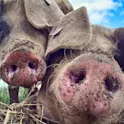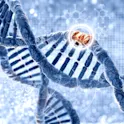
Life sciences
01 Aug 2016
Do trees go to sleep at night?
by Juan Jovel, Frontiersin.org It may sound like something from a fantasy book, but scientists have found that trees seem to go to sleep at night. One hour after sunset, tree branches start dangling and continue doing so throughout the night, reaching their lowest point about 9-11 hours after sunset, new research published in the journal Frontiers in Plant Science has found. When morning comes they start to return to their normal position, which takes another three hours. The daily position of the branches and leaves allows trees to maximize their capture of sunlight, which fuels their biomass-producing processes, while the drooping position probably reduces the loss of heat during the night. Circadian rhythms refer to biological processes that cycle roughly every 24 hours and explain, for instance, patterns of sleeping and feeding in animals. The scientists from Finland, Austria and Hungary, setup to investigate whether silver birch trees experience movement patterns in a circadian fashion. They used a sophisticated technique called Terrestrial Laser Scanning (TLS), which allows monitoring the movement of objects, including trees or parts thereof, during day or nighttime. Dr. Eetu Puttonen, from the National Land Survey of Finland, and his international collaborators, used TLS to monitor the […]













